Kevin W. Bowyer
Improved Ear Verification with Vision Transformers and Overlapping Patches
Mar 30, 2025Abstract:Ear recognition has emerged as a promising biometric modality due to the relative stability in appearance during adulthood. Although Vision Transformers (ViTs) have been widely used in image recognition tasks, their efficiency in ear recognition has been hampered by a lack of attention to overlapping patches, which is crucial for capturing intricate ear features. In this study, we evaluate ViT-Tiny (ViT-T), ViT-Small (ViT-S), ViT-Base (ViT-B) and ViT-Large (ViT-L) configurations on a diverse set of datasets (OPIB, AWE, WPUT, and EarVN1.0), using an overlapping patch selection strategy. Results demonstrate the critical importance of overlapping patches, yielding superior performance in 44 of 48 experiments in a structured study. Moreover, upon comparing the results of the overlapping patches with the non-overlapping configurations, the increase is significant, reaching up to 10% for the EarVN1.0 dataset. In terms of model performance, the ViT-T model consistently outperformed the ViT-S, ViT-B, and ViT-L models on the AWE, WPUT, and EarVN1.0 datasets. The highest scores were achieved in a configuration with a patch size of 28x28 and a stride of 14 pixels. This patch-stride configuration represents 25% of the normalized image area (112x112 pixels) for the patch size and 12.5% of the row or column size for the stride. This study confirms that transformer architectures with overlapping patch selection can serve as an efficient and high-performing option for ear-based biometric recognition tasks in verification scenarios.
Peepers & Pixels: Human Recognition Accuracy on Low Resolution Faces
Mar 25, 2025Abstract:Automated one-to-many (1:N) face recognition is a powerful investigative tool commonly used by law enforcement agencies. In this context, potential matches resulting from automated 1:N recognition are reviewed by human examiners prior to possible use as investigative leads. While automated 1:N recognition can achieve near-perfect accuracy under ideal imaging conditions, operational scenarios may necessitate the use of surveillance imagery, which is often degraded in various quality dimensions. One important quality dimension is image resolution, typically quantified by the number of pixels on the face. The common metric for this is inter-pupillary distance (IPD), which measures the number of pixels between the pupils. Low IPD is known to degrade the accuracy of automated face recognition. However, the threshold IPD for reliability in human face recognition remains undefined. This study aims to explore the boundaries of human recognition accuracy by systematically testing accuracy across a range of IPD values. We find that at low IPDs (10px, 5px), human accuracy is at or below chance levels (50.7%, 35.9%), even as confidence in decision-making remains relatively high (77%, 70.7%). Our findings indicate that, for low IPD images, human recognition ability could be a limiting factor to overall system accuracy.
A Siamese Network to Detect If Two Iris Images Are Monozygotic
Mar 12, 2025Abstract:In Daugman-style iris recognition, the textures of the left and right irises of the same person are traditionally considered as being as different as the irises of two unrelated persons. However, previous research indicates that humans can detect that two iris images are from different eyes of the same person, or eyes of monozygotic twins, with an accuracy of about 80%. In this work, we employ a Siamese network architecture and contrastive learning to categorize a pair of iris images as coming from monozygotic or non-monozygotic irises. This could potentially be applied, for example, as a fast, noninvasive test to determine if twins are monozygotic or non-monozygotic. We construct a dataset comprising both synthetic monozygotic pairs (images of different irises of the same individual) and natural monozygotic pairs (images of different images from persons who are identical twins), in addition to non-monozygotic pairs from unrelated individuals, ensuring a comprehensive evaluation of the model's capabilities. To gain deeper insights into the learned representations, we train and analyze three variants of the model using (1) the original input images, (2) iris-only images, and (3) non-iris-only images. This comparison reveals the critical importance of iris-specific textural details and contextual ocular cues in identifying monozygotic iris patterns. The results demonstrate that models leveraging full eye-region information outperform those trained solely on iris-only data, emphasizing the nuanced interplay between iris and ocular characteristics. Our approach achieves accuracy levels using the full iris image that exceed those previously reported for human classification of monozygotic iris pairs. This study presents the first classifier designed to determine whether a pair of iris images originates from monozygotic individuals.
On the "Illusion" of Gender Bias in Face Recognition: Explaining the Fairness Issue Through Non-demographic Attributes
Jan 21, 2025Abstract:Face recognition systems (FRS) exhibit significant accuracy differences based on the user's gender. Since such a gender gap reduces the trustworthiness of FRS, more recent efforts have tried to find the causes. However, these studies make use of manually selected, correlated, and small-sized sets of facial features to support their claims. In this work, we analyse gender bias in face recognition by successfully extending the search domain to decorrelated combinations of 40 non-demographic facial characteristics. First, we propose a toolchain to effectively decorrelate and aggregate facial attributes to enable a less-biased gender analysis on large-scale data. Second, we introduce two new fairness metrics to measure fairness with and without context. Based on these grounds, we thirdly present a novel unsupervised algorithm able to reliably identify attribute combinations that lead to vanishing bias when used as filter predicates for balanced testing datasets. The experiments show that the gender gap vanishes when images of male and female subjects share specific attributes, clearly indicating that the issue is not a question of biology but of the social definition of appearance. These findings could reshape our understanding of fairness in face biometrics and provide insights into FRS, helping to address gender bias issues.
Lights, Camera, Matching: The Role of Image Illumination in Fair Face Recognition
Jan 15, 2025



Abstract:Facial brightness is a key image quality factor impacting face recognition accuracy differentials across demographic groups. In this work, we aim to decrease the accuracy gap between the similarity score distributions for Caucasian and African American female mated image pairs, as measured by d' between distributions. To balance brightness across demographic groups, we conduct three experiments, interpreting brightness in the face skin region either as median pixel value or as the distribution of pixel values. Balancing based on median brightness alone yields up to a 46.8% decrease in d', while balancing based on brightness distribution yields up to a 57.6% decrease. In all three cases, the similarity scores of the individual distributions improve, with mean scores maximally improving 5.9% for Caucasian females and 3.7% for African American females.
Impact of Sunglasses on One-to-Many Facial Identification Accuracy
Dec 07, 2024



Abstract:One-to-many facial identification is documented to achieve high accuracy in the case where both the probe and the gallery are `mugshot quality' images. However, an increasing number of documented instances of wrongful arrest following one-to-many facial identification have raised questions about its accuracy. Probe images used in one-to-many facial identification are often cropped from frames of surveillance video and deviate from `mugshot quality' in various ways. This paper systematically explores how the accuracy of one-to-many facial identification is degraded by the person in the probe image choosing to wear dark sunglasses. We show that sunglasses degrade accuracy for mugshot-quality images by an amount similar to strong blur or noticeably lower resolution. Further, we demonstrate that the combination of sunglasses with blur or lower resolution results in even more pronounced loss in accuracy. These results have important implications for developing objective criteria to qualify a probe image for the level of accuracy to be expected if it used for one-to-many identification. To ameliorate the accuracy degradation caused by dark sunglasses, we show that it is possible to recover about 38% of the lost accuracy by synthetically adding sunglasses to all the gallery images, without model re-training. We also show that increasing the representation of wearing-sunglasses images in the training set can largely reduce the error rate. The image set assembled for this research will be made available to support replication and further research into this problem.
Training Better Deep Learning Models Using Human Saliency
Oct 21, 2024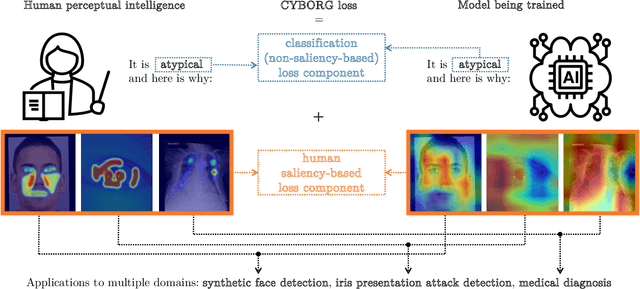
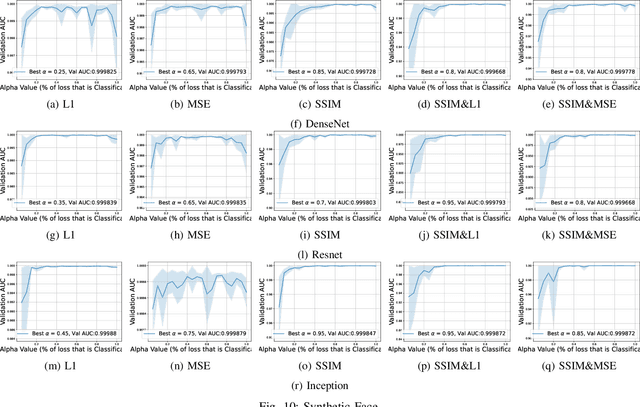
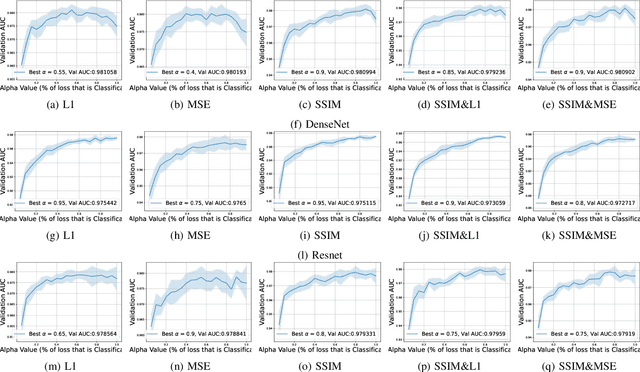
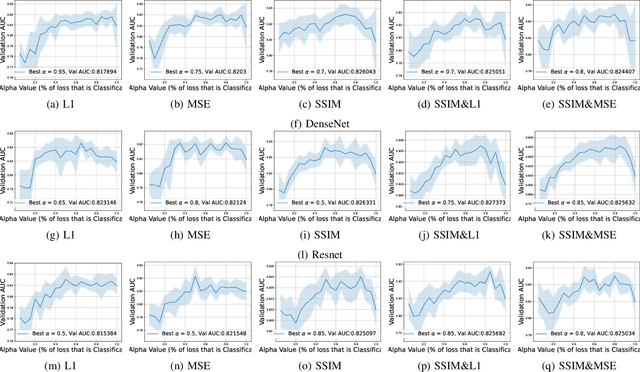
Abstract:This work explores how human judgement about salient regions of an image can be introduced into deep convolutional neural network (DCNN) training. Traditionally, training of DCNNs is purely data-driven. This often results in learning features of the data that are only coincidentally correlated with class labels. Human saliency can guide network training using our proposed new component of the loss function that ConveYs Brain Oversight to Raise Generalization (CYBORG) and penalizes the model for using non-salient regions. This mechanism produces DCNNs achieving higher accuracy and generalization compared to using the same training data without human salience. Experimental results demonstrate that CYBORG applies across multiple network architectures and problem domains (detection of synthetic faces, iris presentation attacks and anomalies in chest X-rays), while requiring significantly less data than training without human saliency guidance. Visualizations show that CYBORG-trained models' saliency is more consistent across independent training runs than traditionally-trained models, and also in better agreement with humans. To lower the cost of collecting human annotations, we also explore using deep learning to provide automated annotations. CYBORG training of CNNs addresses important issues such as reducing the appetite for large training sets, increasing interpretability, and reducing fragility by generalizing better to new types of data.
Vec2Face: Scaling Face Dataset Generation with Loosely Constrained Vectors
Sep 04, 2024Abstract:This paper studies how to synthesize face images of non-existent persons, to create a dataset that allows effective training of face recognition (FR) models. Two important goals are (1) the ability to generate a large number of distinct identities (inter-class separation) with (2) a wide variation in appearance of each identity (intra-class variation). However, existing works 1) are typically limited in how many well-separated identities can be generated and 2) either neglect or use a separate editing model for attribute augmentation. We propose Vec2Face, a holistic model that uses only a sampled vector as input and can flexibly generate and control face images and their attributes. Composed of a feature masked autoencoder and a decoder, Vec2Face is supervised by face image reconstruction and can be conveniently used in inference. Using vectors with low similarity among themselves as inputs, Vec2Face generates well-separated identities. Randomly perturbing an input identity vector within a small range allows Vec2Face to generate faces of the same identity with robust variation in face attributes. It is also possible to generate images with designated attributes by adjusting vector values with a gradient descent method. Vec2Face has efficiently synthesized as many as 300K identities with 15 million total images, whereas 60K is the largest number of identities created in the previous works. FR models trained with the generated HSFace datasets, from 10k to 300k identities, achieve state-of-the-art accuracy, from 92% to 93.52%, on five real-world test sets. For the first time, our model created using a synthetic training set achieves higher accuracy than the model created using a same-scale training set of real face images (on the CALFW test set).
Can the accuracy bias by facial hairstyle be reduced through balancing the training data?
May 30, 2024



Abstract:Appearance of a face can be greatly altered by growing a beard and mustache. The facial hairstyles in a pair of images can cause marked changes to the impostor distribution and the genuine distribution. Also, different distributions of facial hairstyle across demographics could cause a false impression of relative accuracy across demographics. We first show that, even though larger training sets boost the recognition accuracy on all facial hairstyles, accuracy variations caused by facial hairstyles persist regardless of the size of the training set. Then, we analyze the impact of having different fractions of the training data represent facial hairstyles. We created balanced training sets using a set of identities available in Webface42M that both have clean-shaven and facial hair images. We find that, even when a face recognition model is trained with a balanced clean-shaven / facial hair training set, accuracy variation on the test data does not diminish. Next, data augmentation is employed to further investigate the effect of facial hair distribution in training data by manipulating facial hair pixels with the help of facial landmark points and a facial hair segmentation model. Our results show facial hair causes an accuracy gap between clean-shaven and facial hair images, and this impact can be significantly different between African-Americans and Caucasians.
What is a Goldilocks Face Verification Test Set?
May 24, 2024
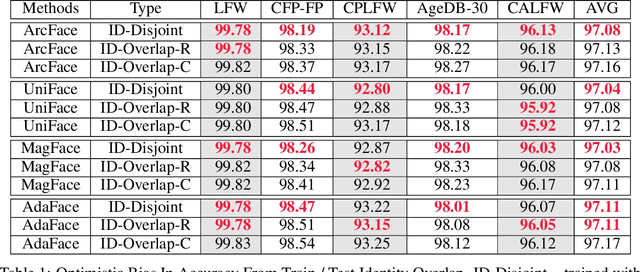


Abstract:Face Recognition models are commonly trained with web-scraped datasets containing millions of images and evaluated on test sets emphasizing pose, age and mixed attributes. With train and test sets both assembled from web-scraped images, it is critical to ensure disjoint sets of identities between train and test sets. However, existing train and test sets have not considered this. Moreover, as accuracy levels become saturated, such as LFW $>99.8\%$, more challenging test sets are needed. We show that current train and test sets are generally not identity- or even image-disjoint, and that this results in an optimistic bias in the estimated accuracy. In addition, we show that identity-disjoint folds are important in the 10-fold cross-validation estimate of test accuracy. To better support continued advances in face recognition, we introduce two "Goldilocks" test sets, Hadrian and Eclipse. The former emphasizes challenging facial hairstyles and latter emphasizes challenging over- and under-exposure conditions. Images in both datasets are from a large, controlled-acquisition (not web-scraped) dataset, so they are identity- and image-disjoint with all popular training sets. Accuracy for these new test sets generally falls below that observed on LFW, CPLFW, CALFW, CFP-FP and AgeDB-30, showing that these datasets represent important dimensions for improvement of face recognition. The datasets are available at: \url{https://github.com/HaiyuWu/SOTA-Face-Recognition-Train-and-Test}
 Add to Chrome
Add to Chrome Add to Firefox
Add to Firefox Add to Edge
Add to Edge